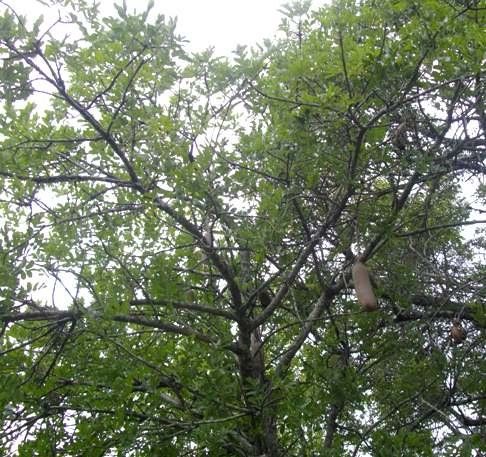Kigelia africana

Author: Ivan Lätti
Photographer: Ivan Lätti
Kigelia africana, the sausage tree, is a medium to large tree that reaches heights of about 25 m (SA Tree List No. 678). The presence of the conspicuous sausage-like fruits hanging down from a tree ensures that every novice will identify K. africana correctly. Fortunately, the fruits may be present almost throughout the year, although not all trees will have them. This is a monotypic species, the only one in its genus.
The species distribution is in the northeastern parts of South Africa, in Limpopo, Mpumalanga, Gauteng and KwaZulu-Natal. Beyond the South African border tropical Africa has a wider distribution range of the species, extending as far as Sudan and Senegal.
The habitat is low altitude woodland and floodplains, occasionally rocky slopes. The trees become particularly large and imposing on river banks. The habitat population is deemed of least concern early in the twenty first century.
The tree is a welcome sight to many for both beauty and usefulness. Game eat the still fresh flower remains that drop off within a day of opening, while porcupines, rhinos, monkeys, bushpigs and baboons count among the consumers of the fruit. The leaves are also browsed.
Traditional medicine has contrived a syphilis remedy from the unripe fruit, as well as treatments for a variety of skin disorders. The perennial search for beer ingredients has led to baking of the ripe fruit for obtaining a booster of beer fermentation. Roasted seeds are eaten during famine. Bear in mind that this same fruit is also poisonous! And remember to hang a sausage fruit in the house as a charm against whirlwinds (Coates Palgrave, 2002; Schmidt, et al, 2002; Van Wyk and Van Wyk, 1997; Pooley, 1993; Poynton, 1975; iNaturalist; Wikipedia; https://pza.sanbi.org; http://redlist.sanbi.org).

